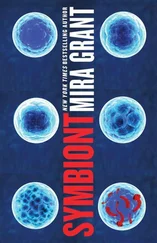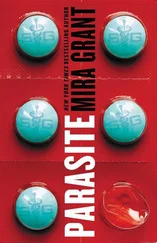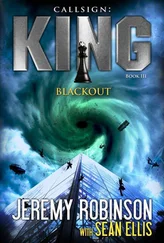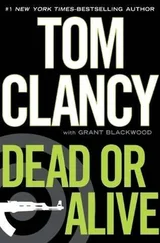“They force-grew her body with a lot of chemicals, a lot of hormones, a lot of radiation, and a lot of luck,” said Alaric slowly. “It only worked because they didn’t need to worry about getting a clone with cancer. She probably was cancerous by the time they finished maturing her, and they just let the Marburg Amberlee part of Kellis-Amberlee do the mop-up when she was exposed to the virus.”
“She mentioned that she wasn’t the only one,” said Becks. “What I’m pretty sure she doesn’t know is that she wasn’t even one of ten.”
I raised an eyebrow. “No?”
“Try more like one out of ten thousand , if you’re starting from the zygote level and then moving up to full-on vat-grown humans. Most of them never made it out of their petri dishes. The ones that did… I don’t understand half this science, except to understand that I don’t like it. It was technically ethical, or would have been, if they hadn’t been growing bodies with functioning brains, but the fact that the CDC can do this at all disturbs me.” Becks shook her head. “I mean, what next? The military starts force-cloning soldiers?”
“Only if they feel like paying five million dollars for every functional model,” said Alaric. “That’s the cost of the cloning—the starting cost. It doesn’t include the cost of the subliminal conditioning, the synapse programming—”
“Which is how she can actually remember things, like dying,” chimed in Becks.
Alaric gave her a look that was half glare, half fond exasperation. “I would have gotten to that,” he said. “But yes. The synapse programming is why she remembers things. And then there was the physical therapy to keep her muscles developing, the immunizations, the process of getting her to maturity… you’re looking at thirty or forty million dollars of medical technology. Easy.”
There was a pause while we turned to look at George. She shifted in her sleep, one foot kicking out a few inches before it was pulled back to nestle against the opposite ankle. I turned back to the others.
“Well, I hope they don’t think they’re getting her back,” I said. “What else can you get out of those files?”
You want to know if I’m going to die again . Georgia-in-my-head was talking less and less the longer there was a living, breathing George for me to hold on to, but that didn’t mean she was gone. It just meant my crazy was biding its time, waiting to strike when I was least prepared. You don’t go that far past the borders of Crazytown and come waltzing out unscathed.
The worst part of it was that she—the dead girl’s voice in my head—was right, because she was always right. I wanted to know if George was going to die. There was no way I could survive that twice.
Becks looked at me levelly. “She’s stable, Shaun. Those doctors from the EIS took out the CDC fail-safes, and they couldn’t actually build a human body that would self-destruct without help. The science isn’t that good.”
“Yet,” said Alaric. He shook his head. “I believe in her now, Shaun. I mean, she’s right when she says she’s an imperfect copy—the Kellis-Amberlee kept turning her brain’s basic functions back on, but there was a little bit more tissue loss every time. That doesn’t mean she’s not who she says she is. She never had the chance to become anybody else.”
“God.” Becks shuddered. “Headshots just became a hell of a lot more important to me.”
I frowned, finishing off my lukewarm coffee before I asked, “Why?”
“Because Miss Atherton has just realized one of the things the CDC would prefer the population not be aware of.” Dr. Shoji took the seat next to Alaric. “I hope you don’t mind my joining you. When I realized you were finally getting around to discussing the science, I thought you might like the opportunity to question someone who used to be involved with it.”
My eyes narrowed. “You mean—”
“No, no.” He put his hands up, motioning for me to stay calm. “I left that part of my life behind a long time ago. There were some ethical lines I couldn’t bring myself to cross, and at that point… I was still suited to work in the private sector—hence my work with the Kauai Institute—but I could no longer stomach the CDC.”
“The cross-infection trials Kelly mentioned,” said Alaric.
It took me a moment to realize what he was talking about. When we first got to Dr. Abbey’s lab—what felt like a million years ago—we’d still been traveling with Kelly Connolly. In an effort to show us that the CDC wasn’t all rainbows and roses, Dr. Abbey asked her about some cross-infection trials using prisoners who “volunteered” to be injected with multiple strains of KA. All of them died.
“Yes,” said Dr. Shoji. “Those men and women died horribly, and they didn’t have to. That was when I realized it had to end. I stopped working on things that we didn’t need to do—and forgive me, Shaun, but finding a new way of bringing back the dead wasn’t something that needed to be a priority. We’d already done that. It didn’t work out well.”
“It’s cool,” I said.
Slowly, Becks said, “Kellis-Amberlee ‘raises the dead’ by turning the body’s electrical impulses back on. It’s like a viral defibrillator that just keeps on working, and working, and working, until there’s nothing left to work with. If they got a clean brain scan off of Georgia after you shot her, that means her brain was turned on at the time. They took their scans off a living brain.”
Dr. Shoji nodded. “Yes,” he agreed. “That’s how the technology works. It was originally intended to be a treatment for Alzheimer’s, a way of calling back memories that were still present, but had become… clouded, let’s say. Misplaced somehow. Once we realized that it could be used on the victims of Kellis-Amberlee, there was hope that we’d be able to bring them back to themselves—that memory recall could be used as a form of treatment, that, combined with antivirals and proper therapy, they could be cured.”
“So why didn’t it work?” I asked.
“The virus didn’t give up that easily. Nothing we did resulted in anything but agitation in the subjects. Some researchers, myself included, were concerned that we might actually cause the infected to become self-aware. People with rabies are aware that they’ve done horrible things. They simply can’t prevent themselves from doing them. No one wanted that with Kellis-Amberlee, and so the project was suspended.”
“Why didn’t you publish?” asked Becks.
“For the same reason the government is shooting everybody with a reservoir condition,” said Alaric. “If they let it get out that people are still thinking, no one’s going to pull the trigger. And then there won’t be anyone left to do the curing, because we’ll all be zombies.”
I frowned. “I’m not following.”
“They’re saying that once someone is infected, the virus takes over, but they’re still in there.” The engines might be soft, but they were loud enough that I hadn’t heard George walking up until she spoke. I turned to see her standing beside me, hair still rumpled from sleep, sunglasses in her hand. She looked at Dr. Shoji and asked, “Do zombies think?”
“No,” he said. “The virus does their thinking for them, thank God, because Alaric is right. If people stop shooting because they’re afraid of committing murder, we’re all going to die. But there’s a chance—not a huge chance, but a chance—that zombies dream.”
George nodded, leaning against the seat next to me. “That’s what I thought you were going to say. How long before we land?”
“We have about an hour before we begin our initial descent into Washington D.C.,” said Dr. Shoji. “How are you feeling?”
Читать дальше












